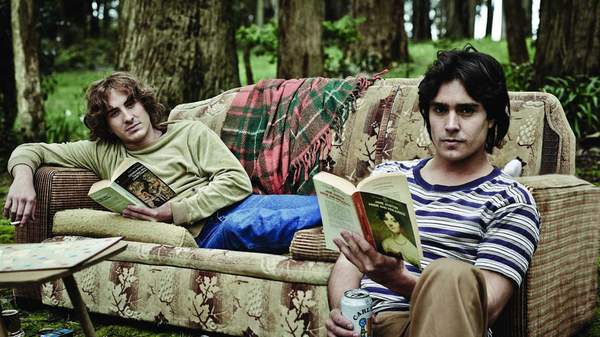Overview
When Timothy Conigrave wrote Holding the Man, it was clearly a work of great personal significance. The year was 1994, he was 34, and his memory was fading as a result of HIV-related complications. The narrative he committed to paper wasn't just his own memoir, but his way of recalling his life-long lover, John Caleo. Alas, Conigrave would succumb to his condition before his book was published, but his words, their romance and their plight have persevered to touch the hearts of many.
In fact, after more than two decades of reader devotion plus several stagings of theatre productions based on the text, Holding the Man comes to cinemas with the weight of considerable history. Others, including Walking on Water director and Conigrave's friend Tony Ayres, have previously tried and failed to bring the tale to the screen. That filmmaker Neil Armfield and writer Tommy Murphy — who also wrote the play — succeed is no mean feat. That they do the story and their subjects justice in a tender and touching film isn't, either.
Conigrave (Ryan Corr) and Caleo (Craig Stott) first met as Melbourne schoolboys in the late '70s, the former an aspiring actor treading the boards in a class version of Romeo and Juliet, the latter running around football fields as an emerging Aussie Rules star, and both raising more than a few eyebrows for pursuing their relationship. Weathering the many storms wrought by the disapproval of their respective parents (played by Guy Pearce and Kerry Fox, and Anthony LaPaglia and Camilla Ah Kin), Australian society's intolerant attitudes, and the outbreak of the AIDS epidemic, theirs was not an easy romance, but until health issues cut short their time together, it was an enduring one.
Making his first film since 2006's Candy, Armfield doesn't take the linear approach to Conigrave and Caleo's love as he flits from their early to later years. He jumps between important moments with the affectionate recollection of someone assembling their thoughts — which is how Conigrave's experience is framed. Sometimes the feature is clumsy and clunky as a result, particularly in trying to relate teenage antics and in spouting dialogue that sounds a little too theatrical. Sometimes, it hits the mark perfectly; just witness the hospital-set scenes, and try to keep your eyes from misting over.
Of course, much of the emotion springs not from the warm colours the movie is painted in or from the period-appropriate rock soundtrack — both often overdone — but from the two lead performances. Even though they struggle with selling the characters' younger guises, Corr and Stott shine in conveying their opposites-attract pairing, as well as in showing the necessary growth and change as they traverse the trials, tribulations and troubles of being gay men in the 1980s.
Indeed, the central duo's efforts in embodying the real-life figures they play with authenticity and intimacy is what makes the film linger long after viewing. Holding the Man's outcome might be known, but its lasting impact in telling one of Australia's great tragedies still offers many a surprise, perhaps none more so than its heartbreaking combination of the sweet and the sorrowful.
